|
Picture this if you will; it’s a Thursday, 9.45 in the morning and the suns shining, it’s warm, and you are standing on the driving range at your club on the far right hand side of the grass tee where you like to practice.  You drag another golf ball over from the pile of 100 practice balls that you purchased from the pro shop at 9.30 and you place it onto a nice piece of grass right next to your last divot. You are using your 6 iron and hitting shots at the 175 yard target marker in the middle of the range. You do this most days and your goal is to hit your 6 iron as close to the target as you can. After you hit your 6 iron and you’re satisfied with your results you will hit some 3 irons and then you'll hit some drivers at the 250 yard marker because it has been giving you some problems on the course. Later when you finish your practice balls you will then hit some putts on the putting green in front of the clubhouse and then go out for 18 holes with your friends at 12.15. Does this sound vaguely familiar? Maybe it does and maybe it doesn’t, but you can be sure of one thing, this type of approach to golf practice is pretty common. Why? Practice Without a Plan - The Perfect Way to Fail One of the consistent problems that David and I have witnessed countless times over the years is elite amateur golfers and professional golfers executing daily golf practice routines with little to no direct relevance to improving their performance on the golf course in the long term. 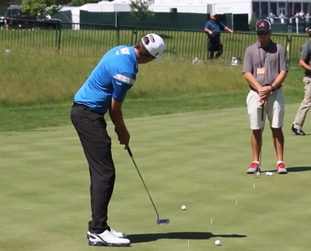 In others words, the drill or practice routine does not connect them to their longer term goal. Can you imagine putting hours and hours into your game only to discover that what you were working on did not and would not improve your golf score average when you compete? This is still one of the biggest problems in elite level golf as we see it, and sadly it doesn’t look like changing anytime soon. Drills and Skills Without a Destination When you practice your golf skills you must have a well thought out plan that links your current practice effort to some pre-defined outcome. Otherwise, what is the purpose of your golf practice? You're just spinning your wheels. In my last article I shared with you that the leading tour players on the major golf tours now use analytics experts who help them to understand what they need to work on to improve their golf performances on the golf course based on carefully evaluating their golf course statistics. Why do you think the best players in the game are doing this? The answer is pretty simple; they want to know that what they are working on - and applying their best effort to is correct! And so should you. How do you know that the drills or practice routines you are using currently are the correct ones for you? Imagine for just one moment that they’re not! What are you going to do about it? 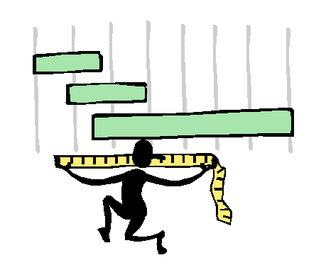 Golf Performance Progress Goals If you are a serious golfer who wants to achieve a lower scoring average then you really have to take a good look at what you are doing right now when you go to work on your game. This is where golf performance progress goals are incredibly useful. Golf performance progress goals are exactly as they sound; Golf-Performance-Progress-Goals. They are short-term goals that help you to bridge the performance gap and require an understanding of what you need to practice, and also how much practice you need to do (within a defined timeline) to help you to achieve the performance goals that you have established. Remember in the last lesson we discussed three types of golf performance – goal types for advanced golfers? They were; 1. Golf shot (ball flight) goals 2. Golf stroke (technique) goals 3. Golf score (metrics) goals Deciding what to work on is really important here, because it will be difficult to improve your performance on the golf course if you pick the wrong category to work on. In the last lesson I showed you an example of a performance goal of achieving a 75 score average.  Break the Goal Down Say that your current score average is 77 which when divided by 18 holes works out to be about 4.27 strokes per hole. A 75 score average is 4.16 strokes per hole, the difference between the two being just 0.11 strokes per hole improvement. Doesn't seem like a lot does it? What would you need to do to improve your chances of improving your per hole stroke average of 0.11 over 12 months?
These are the type of highly specific and important questions that you need to ask yourself to ensure that what you are practicing every day is relevant and moving you towards your performance goals.  Measuring Goal Progress The next helpful question is how will you measure your progress along the way? This is also an important question and forms the basis of developing and implementing golf performance progress goals. When you practice to improve your performance it will be helpful to decide how you measure your progress along the way. Ball Flight Goals: You can measure your ball flight consistency by measuring how effectively you can control;
By creating a simple table like the one I've designed below will help you track and record the practice shot information very easily and by using a simple code you can easily monitor your progress and manage your practice effort effectively. Basically you design the type of shot you wish to hit (with the help of your golf instructor), like a medium height draw shot that starts on line. You measure the quality of each golf shot and you use the matrix (below) to help you to measure and manage the type of golf shot that will help you to achieve a consistent ball flight. Your golf instructor will be able to help you to stay on track with your goals more easily using this simple approach because you are getting accurate feedback every time you practice using this simple method of data collection. Alternatively if you have access to Trackman or Flightscope technology you could measure ball flight this way. **Remember with this strategy you are measuring the quality of the golf shot execution NOT the quality of the golf stroke. Golf Stroke Goals What about your golf stroke technique? How would you measure improvement here? If your golf instructor has a 3D system you could measure your stroke improvement using a high tech approach, but what if you don’t have access to this type of technology? Is there another way? There is! You can isolate the part of your golf stroke technique that you wish to improve and track your improvement using a simple drill sheet where you rate the quality of each stroke against a standard that you define with the assistance of your instructor. The first thing you will need to do is discuss with your golf instructor exactly what part of your technique needs to be improved and the type of drill or practice routine that you will employ, as well as the time line for achieving the change. Using our stroke improvement matrix will help you to stay focused on the purpose of your drill or routine and also accelerate the change process because you are tracking each set of golf shots against the standard that you have established. Basically you rate each set of 10 golf strokes you perform on a scale of 1 to 10 from not yet competent through to learned. Your ultimate objective is to consistently rate in the 7 to 10 range where you have attained a level of unconscious competence over the drill / skill or routine. **Remember with this strategy you are measuring the quality of golf stroke technique execution NOT the quality of the golf shot. Golf Score Goals Maybe your shot-making and techniques are really sound and you don’t have to do a lot of work in these areas but you need to be able to monitor your performances from round to round and establish benchmarks along the way. It is surprising to us how many tournament professionals aren’t tracking their numbers to understand where they are with their game. If you have a score average in tournaments of 72.0 and you are missing 50 percent of cuts in a year then it makes good sense to start monitoring your scores carefully to identify the weakest-most important elements of your game that are keeping your average higher than you want it to be. Lowering your score average from 72.0 to 71.5 (half a shot) over 12 months would do two things. 1. You would make more cuts in a season 2. You would earn more income Tommy Gainey’s score average in 2013 on the PGA Tour was 71.99 (actual) for 84 rounds and he made 14 cuts from the 28 tournaments (50%) he played and earned $520,479. D.A Points played the same amount of events as Tommy Gainey in 2013 but his score average was 71.46 (actual) a difference of .53 strokes per round and he earned a whopping $2,658, 887, a difference of $2,138,408 dollars. If you were Tommy Gainey I bet you would be studying the numbers carefully to identify the areas of your game that need some improvement. Interestingly D.A Points cut average was only slightly better 15 cuts made from 28) than Tommy Gainey, but he produced a lower score average for the 15 tournaments he played all four days in. If you were to choose one golf performance progress goal from the list below that linked directly to the performance goal you’ve chosen, which goal would it be? Using our example below we listed five performance goals and I want you to think about how you would measure performance in each of them over a defined period of time. Golf Score Forecasting Model The simplest way to measure your progress towards a goal (like achieving a 75 score average) is like this. Let’s say that your current score average in December is 77.0 and your goal in 12 months is to achieve a 75.0 average, the formula for working out is really easy. 77.0 minus 75.0 divided by 12 months equals 0.166 strokes per month. So the January target would be 77 minus 0.166 (rounded off) which is 76.8. You follow this simple formula for each month and you will end up on the number in 12 months. Now this doesn’t mean that it will miraculously happen without a plan for improvement, but it will certainly help you to stay focused on the progressive realization of your goal. Ok, so how will you measure your golf progress performance goals now that I have given you some strategies? Take out your goals notebook and write in your number one golf performance progress goal. Write it just like I have in the example below and then do the same for the rest of your golf performance progress goals. So there you have it. You now have a useful way of measuring your progress towards your goals.
Since our first article we have traveled on a journey from the end of your golf career to the beginning and along the way you have committed yourself to designing your ideal golf career using your goals notebook. Give yourself a slap on the back and WELL DONE! Sadly the majority of advanced and elite amateur and professional golfers don't have a goal plan, only a bunch of weak wishes, and you now have a document that will guide you carefully and safely along your performance pathway to golf success. Remember that nothing is set in stone and you can change the goals as you need to and refine your goal process for achieving them. We wish you the very best with your journey and if we can help you in any way please don't hesitate to contact us. Lawrie Montague and David Milne - Pro Tour Golf College Your Success On Tour is Our Business Comments are closed.
|
Archives
June 2019
|
Proudly Supported By
Copyright © 2011 - 2018 Pro Tour Golf College
Website Managed By Golf Performance Media
All Rights Reserved
Website Managed By Golf Performance Media
All Rights Reserved

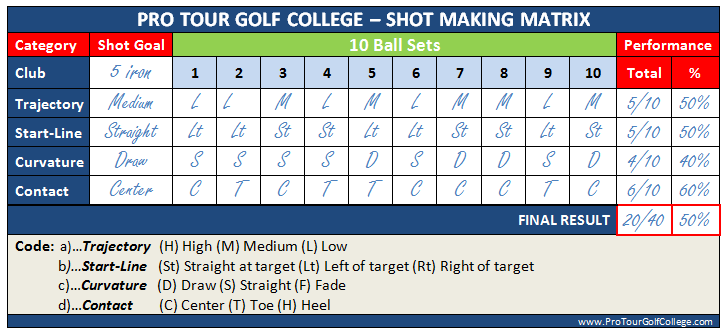
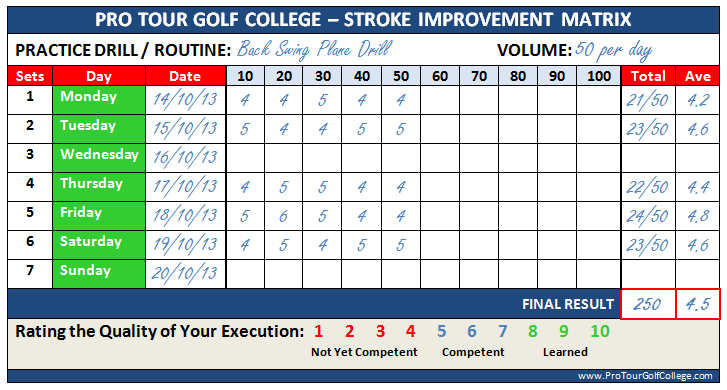

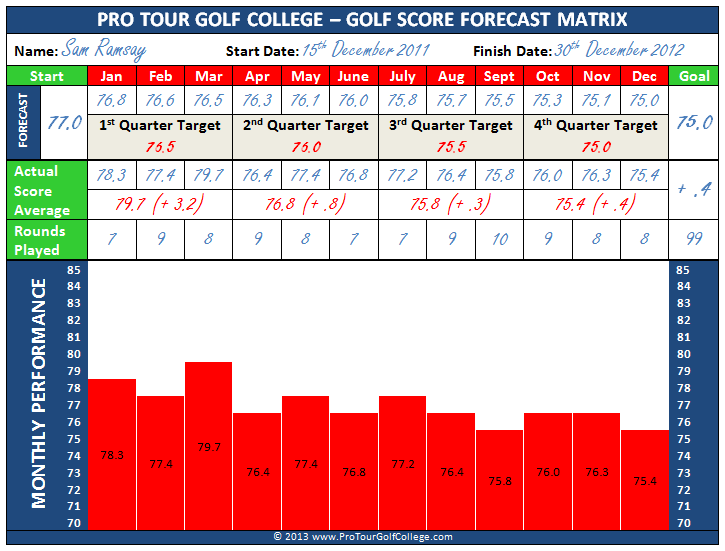
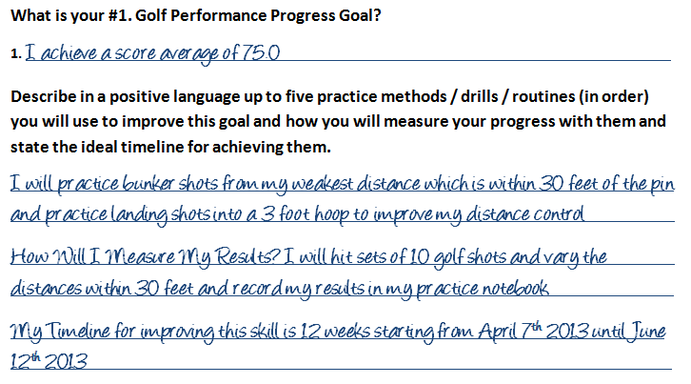

 RSS Feed
RSS Feed



